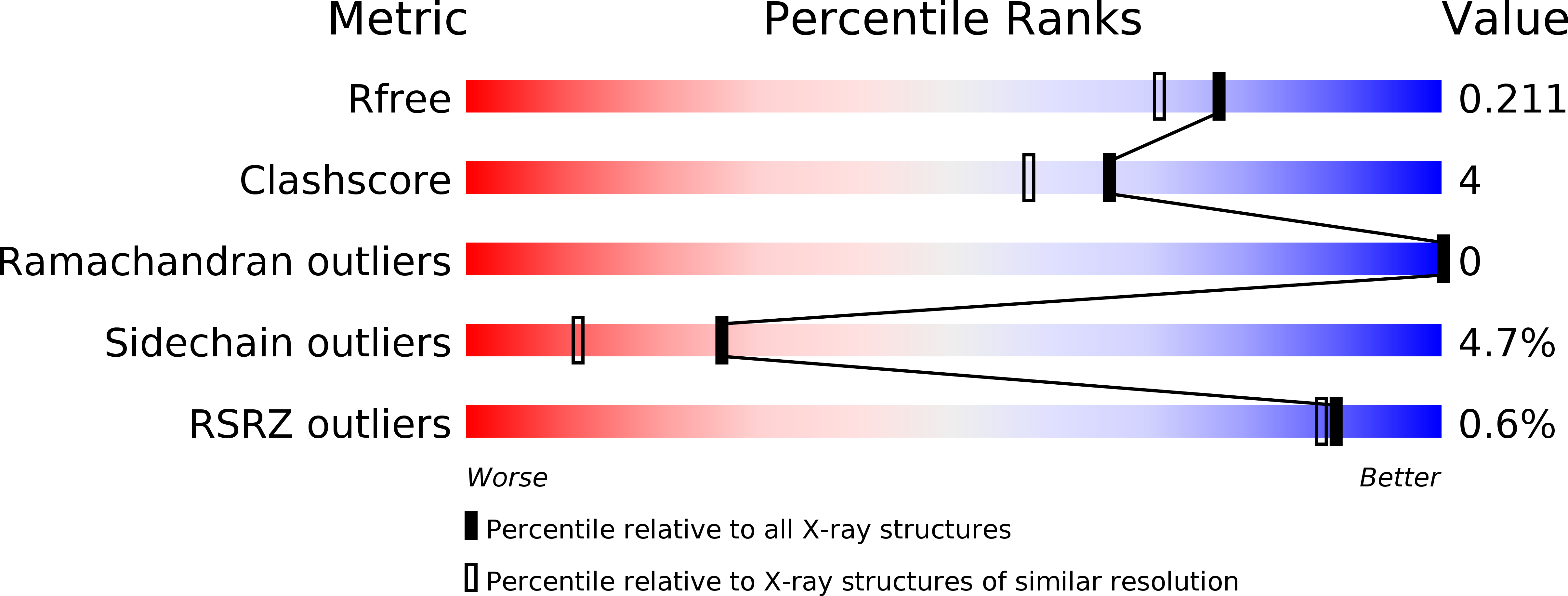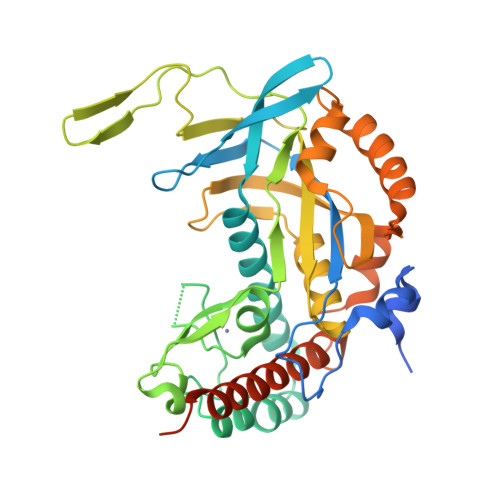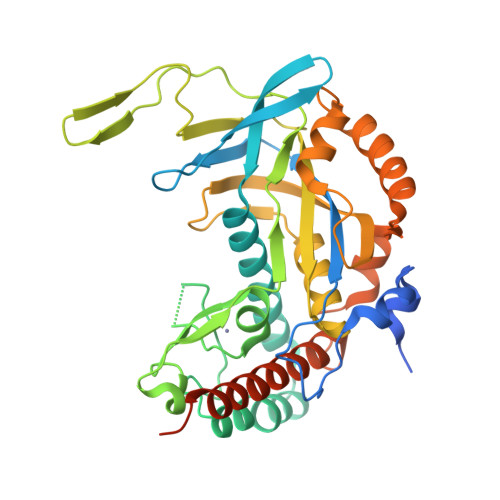Structural analyses of the CRISPR protein Csc2 reveal the RNA-binding interface of the type I-D Cas7 family.
Hrle, A., Maier, L.K., Sharma, K., Ebert, J., Basquin, C., Urlaub, H., Marchfelder, A., Conti, E.(2014) RNA Biol 11: 1072-1082
- PubMed: 25483036
- DOI: https://doi.org/10.4161/rna.29893
- Primary Citation of Related Structures:
4TXD - PubMed Abstract:
Upon pathogen invasion, bacteria and archaea activate an RNA-interference-like mechanism termed CRISPR (clustered regularly interspaced short palindromic repeats). A large family of Cas (CRISPR-associated) proteins mediates the different stages of this sophisticated immune response. Bioinformatic studies have classified the Cas proteins into families, according to their sequences and respective functions. These range from the insertion of the foreign genetic elements into the host genome to the activation of the interference machinery as well as target degradation upon attack. Cas7 family proteins are central to the type I and type III interference machineries as they constitute the backbone of the large interference complexes. Here we report the crystal structure of Thermofilum pendens Csc2, a Cas7 family protein of type I-D. We found that Csc2 forms a core RRM-like domain, flanked by three peripheral insertion domains: a lid domain, a Zinc-binding domain and a helical domain. Comparison with other Cas7 family proteins reveals a set of similar structural features both in the core and in the peripheral domains, despite the absence of significant sequence similarity. T. pendens Csc2 binds single-stranded RNA in vitro in a sequence-independent manner. Using a crosslinking - mass-spectrometry approach, we mapped the RNA-binding surface to a positively charged surface patch on T. pendens Csc2. Thus our analysis of the key structural and functional features of T. pendens Csc2 highlights recurring themes and evolutionary relationships in type I and type III Cas proteins.
Organizational Affiliation:
a Structural Cell Biology Department; Max Planck Institute of Biochemistry ; Martinsried , Germany.

















